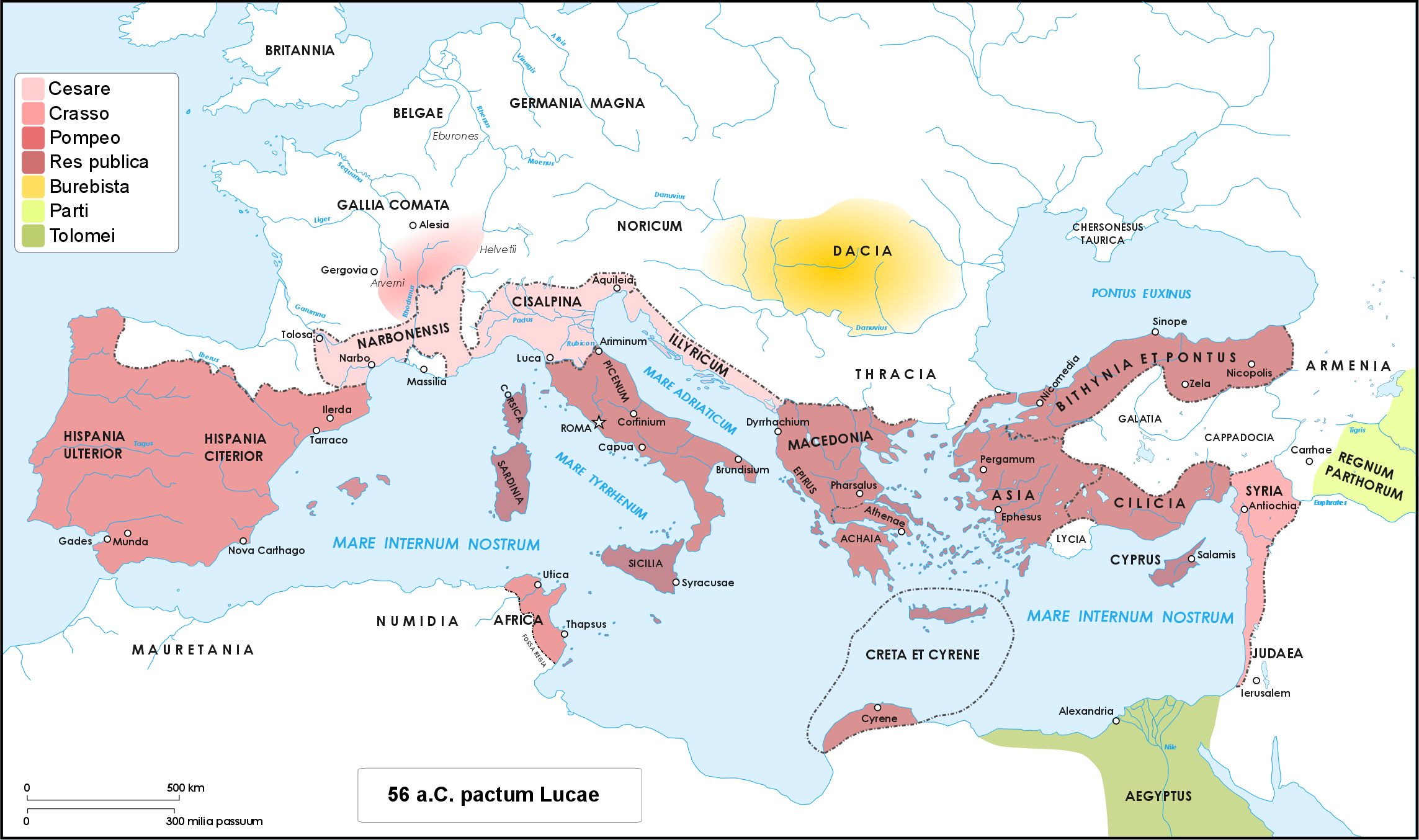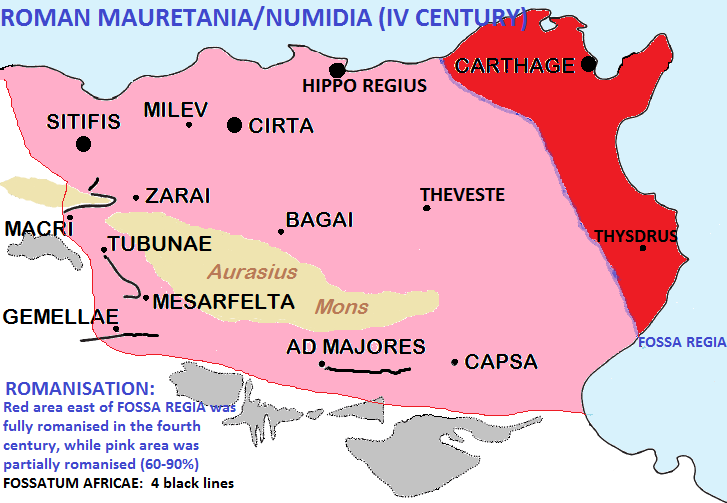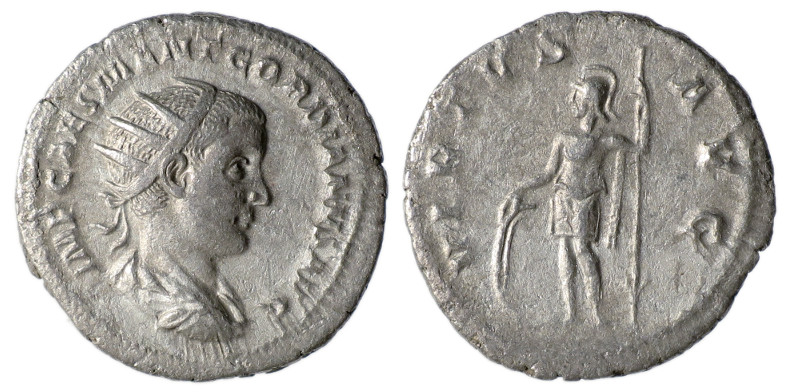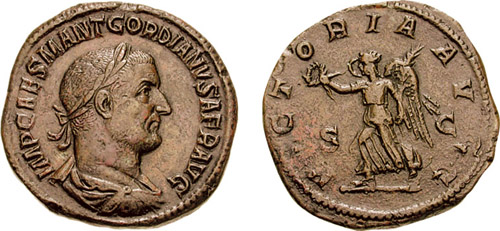|
Thapsus
Thapsus, also known as Tampsus and as Thapsus Minor to distinguish it from Thapsus in Sicily, was a Carthaginian and Roman port near present-day Bekalta, Tunisia. Geography Thapsus was established on Ras ed-Dimas, an easily defended promontory on Tunisia's Mediterranean coast. It was near a salt lake. It was about from the island of Lampedusa and approximately southeast of Carthage. History Thapsus was founded by the Phoenicians. It served as a waypoint on the trade routes between the Strait of Gibraltar and Phoenicia and as a market for the inland products of the area. Diodorus Siculus write that Agathocles of Syracuse conquered the city. During his civil war, Julius Caesar defeated Metellus Scipio and the Numidian king JubaI at the costly 46BC Battle of Thapsus. Caesar exacted a payment of sesterces from the vanquished. The victory marked the end of opposition against him in Africa. Thapsus subsequently became a Roman colony in the province of Byzacena. The town's enor ... [...More Info...] [...Related Items...] OR: [Wikipedia] [Google] [Baidu] |
Caesar's Civil War
Caesar's civil war (49–45 BC) was one of the last politico-military conflicts of the Roman Republic before its reorganization into the Roman Empire. It began as a series of political and military confrontations between Gaius Julius Caesar and Gnaeus Pompeius Magnus. Before the war, Caesar had led an invasion of Gaul for almost ten years. A build-up of tensions starting in late 49 BC, with both Caesar and Pompey refusing to back down led, however, to the outbreak of civil war. Eventually, Pompey and his allies induced the Senate to demand Caesar give up his provinces and armies. Caesar refused and instead marched on Rome. The war was a four-year-long politico-military struggle, fought in Italy, Illyria, Greece, Egypt, Africa, and Hispania. Pompey defeated Caesar in 48 BC at the Battle of Dyrrhachium, but was himself defeated decisively at the Battle of Pharsalus. Many former Pompeians, including Marcus Junius Brutus and Cicero, surrendered after the battle, wh ... [...More Info...] [...Related Items...] OR: [Wikipedia] [Google] [Baidu] |
Quintus Caecilius Metellus Pius Scipio Nasica
Quintus Caecilius Metellus Pius Scipio (c. 95 – 46 BC), often referred to as Metellus Scipio, was a Roman senator and military commander. During the civil war between Julius Caesar and the senatorial faction led by Pompey, he was a staunch supporter of the latter. He led troops against Caesar's forces, mainly in the battles of Pharsalus and Thapsus, where he was defeated. He later committed suicide. Ronald Syme called him "the last Scipio of any consequence in Roman history." Family connections and name The son of Publius Cornelius Scipio Nasica, praetor about 95 BC, and Licinia, Scipio was the grandson of Publius Cornelius Scipio Nasica, consul in 111, and Lucius Licinius Crassus, consul in 95. His great-grandfather was Scipio Nasica Serapio, the man who murdered Tiberius Gracchus in 133 BC. Through his mother Cornelia, Serapio was also the grandson of Scipio Africanus. Scipio's father died not long after his praetorship, and was survived by two sons and two daughters. The bro ... [...More Info...] [...Related Items...] OR: [Wikipedia] [Google] [Baidu] |
Julius Caesar
Gaius Julius Caesar (; ; 12 July 100 BC – 15 March 44 BC), was a Roman general and statesman. A member of the First Triumvirate, Caesar led the Roman armies in the Gallic Wars before defeating his political rival Pompey in a civil war, and subsequently became dictator from 49 BC until his assassination in 44 BC. He played a critical role in the events that led to the demise of the Roman Republic and the rise of the Roman Empire. In 60 BC, Caesar, Crassus and Pompey formed the First Triumvirate, an informal political alliance that dominated Roman politics for several years. Their attempts to amass power as were opposed by the within the Roman Senate, among them Cato the Younger with the frequent support of Cicero. Caesar rose to become one of the most powerful politicians in the Roman Republic through a string of military victories in the Gallic Wars, completed by 51 BC, which greatly extended Roman territory. During this time he both invaded Britain and built a b ... [...More Info...] [...Related Items...] OR: [Wikipedia] [Google] [Baidu] |
Thapsos
Thapsos ( el, Θάψος) was a prehistoric village in Sicily of the middle Bronze Age. It was found by the Italian archaeologist Paolo Orsi on the small peninsula of Magnisi, near Priolo Gargallo. In its vicinity was born the Thapsos culture, one of the most important prehistoric cultures in Sicily (identified with the people of Sicani). History The site is notable for its village - the first known city in Sicily - and for its rich necropolis. David Abulafia writes:A settlement at Thapsos, an offshore island in eastern Sicily, offers evidence of a sophisticated, imported culture, Mycenaean in origin. The settlers created a grid-like town with streets up to four metres wide, spacious houses built round courtyards, and tombs full of Late Helladic wares from the Greek lands, suggesting 'a veritable foreign colony on the site'. Indeed, the closest analogy to the layout of the houses in Thapsos is to be found at the other end of the Mycenaean world, on Cyprus, at Enkomi near ... [...More Info...] [...Related Items...] OR: [Wikipedia] [Google] [Baidu] |
Bekalta
Bekalta, ( ar, البقالطة, ''al-Biqāliṭa''), is a Tunisian coastal town, around 30 km. south of Monastir and around 14 km. northeast of Mahdia. The main activities of the local population are agriculture and fishing. It gives its name to the Baklouti pepper. See also * Thapsus * Tunisia * Monastir Governorate Monastir Governorate ( ' ) is one of the twenty-four governorates of Tunisia. It is situated in north-eastern Tunisia. It covers an area of 1,019 km2 (393 mi2) and has a population of 548,828 (2014 census). The capital is Monastir. Ad ... External links * * Personal blogs related to Bekaltabekalta.unblog.fr* Populated places in Monastir Governorate Communes of Tunisia {{Tunisia-geo-stub ... [...More Info...] [...Related Items...] OR: [Wikipedia] [Google] [Baidu] |
Juba I Of Numidia
Juba I of Numidia ( lat, IVBA, xpu, ywbʿy; –46BC) was a king of Numidia (reigned 60–46 BC). He was the son and successor to Hiempsal II. Biography In 81 BC Hiempsal had been driven from his throne; soon afterwards, Pompey was sent to Africa by Sulla to reinstate him as king in Numidia, and because of this Hiempsal and later Juba became Pompey's allies. This alliance was strengthened during a visit by Juba to Rome, when Julius Caesar insulted him by pulling on his beard during a trial when Caesar was defending his client against Juba's father, and still further in 50 BC, when the tribune Gaius Scribonius Curio openly proposed that Numidia should be sold privately. In August 49 BC, Caesar sent Curio to take Africa from the Republicans. Curio was overconfident and held Publius Attius Varus (Varus), the governor of Africa, in low esteem. Curio took fewer legions than he had been given. In the Battle of the Bagradas the same year, Curio led his army in a bold, uphill attack ... [...More Info...] [...Related Items...] OR: [Wikipedia] [Google] [Baidu] |
Agathocles Of Syracuse
Agathocles ( grc-gre, Ἀγαθοκλῆς, ''Agathoklḗs''; 361–289 BC) was a Greek tyrant of Syracuse (317–289 BC) and self-styled king of Sicily (304–289 BC). Biography Agathocles was born at Thermae Himeraeae (modern name Termini Imerese) in Sicily. The son of a potter who had moved to Syracuse in about 343 BC, he learned his father's trade, but afterwards entered the army along with his brother Antander. In 333 BC he married the widow of his patron Damas, a distinguished and wealthy citizen. He was twice banished for attempting to overthrow the oligarchical party in Syracuse. In 317 BC he returned with an army of mercenaries under a solemn oath to observe the democratic constitution which was established after they took the city. Having massacred the oligarchs and the richest of the citizenry, he thus made himself master of Syracuse, and he created a strong army and fleet and subdued the greater part of Sicily. War with Carthage follo ... [...More Info...] [...Related Items...] OR: [Wikipedia] [Google] [Baidu] |
Byzacena
Byzacena (or Byzacium) ( grc, Βυζάκιον, ''Byzakion'') was a Late Roman province in the central part of Roman North Africa, which is now roughly Tunisia, split off from Africa Proconsularis. History At the end of the 3rd century AD, the Roman emperor Diocletian divided the great Roman province of Africa Proconsularis into three smaller provinces: Zeugitana in the north, still governed by a proconsul and referred to as Proconsularis; Byzacena to its adjacent south, and Tripolitania to its adjacent south, roughly corresponding to southeast Tunisia and northwest Libya. Byzacena corresponded roughly to eastern Tunisia or the modern Tunisian region of Sahel. Hadrumetum (modern Sousse) became the capital of the newly made province, whose governor had the rank of ''consularis''. At this period the Metropolitan Archbishopric of Byzacena was, after the great metropolis Carthage, the most important city in Roman (North) Africa west of Egypt and its Patriarch of Alexandria. Episc ... [...More Info...] [...Related Items...] OR: [Wikipedia] [Google] [Baidu] |
Thysdrus
Thysdrus was a Carthaginian town and Roman colony near present-day El Djem, Tunisia. Under the Romans, it was the center of olive oil production in the provinces of Africa and Byzacena and was quite prosperous. The surviving amphitheater is a World Heritage Site. Name The Punic name of the town was (). The Latin name ' has Berber roots. History Thysdrus began as a small Carthaginian and Berber village. Following the Punic Wars, it was refounded as a Roman townThysdrus's History. and probably received some of 's veterans as settlers in 45BC. ... [...More Info...] [...Related Items...] OR: [Wikipedia] [Google] [Baidu] |
Gordian III
Gordian III ( la, Marcus Antonius Gordianus; 20 January 225 – February 244) was Roman emperor from 238 to 244. At the age of 13, he became the youngest sole emperor up to that point (until Valentinian II in 375). Gordian was the son of Antonia Gordiana and Junius Balbus, who died before 238. Antonia Gordiana was the daughter of Emperor Gordian I and younger sister of Emperor Gordian II. Very little is known of his early life before his acclamation. Gordian had assumed the name of his maternal grandfather in 238. Rise to power In 235, following the murder of Emperor Alexander Severus in Moguntiacum (modern Mainz), the capital of the Roman province Germania Superior, Maximinus Thrax was acclaimed emperor. In the following years, there was a growing opposition against Maximinus in the Roman Senate and amongst the majority of the population of Rome. In 238, a rebellion broke out in the Africa Province, where Gordian's grandfather and uncle, Gordian I and II, were proclaimed jo ... [...More Info...] [...Related Items...] OR: [Wikipedia] [Google] [Baidu] |
Gordian II
Gordian II ( la, Marcus Antonius Gordianus Sempronianus Romanus; 192 – April 238) was Roman emperor with his father Gordian I in 238 AD, the Year of the Six Emperors. Seeking to overthrow Maximinus Thrax, he died in battle outside Carthage. Since he died before his father, Gordian II had the shortest reign of any Roman emperor, at 22 days. Early life Born 192, Gordian II was the only known son of Gordian I, who was said to be related to prominent senators. His praenomen and nomen ''Marcus Antonius'' suggest that his paternal ancestors received Roman citizenship under the triumvir Mark Antony, or one of his daughters, during the late Roman Republic. Gordian's cognomen "Gordianus" suggests that his family origins were from Anatolia, especially Galatia and Cappadocia. According to the notoriously unreliable '' Historia Augusta'', his mother was a Roman woman called Fabia Orestilla, born circa 165, who the ''Historia'' claims was a descendant of emperors Antoninus Pius an ... [...More Info...] [...Related Items...] OR: [Wikipedia] [Google] [Baidu] |
Gordian I
Gordian I ( la, Marcus Antonius Gordianus Sempronianus Romanus; 158 – April 238 AD) was Roman emperor for 22 days with his son Gordian II in 238, the Year of the Six Emperors. Caught up in a rebellion against the Emperor Maximinus Thrax, he was defeated by forces loyal to Maximinus, and he committed suicide after the death of his son. Family and background Little is known about the early life and family background of Gordian I. There is no reliable evidence on his family origins. Gordian I was said to be related to prominent senators of his time. His praenomen and nomen ''Marcus Antonius'' suggested that his paternal ancestors received Roman citizenship under the triumvir Mark Antony, or one of his daughters, during the late Roman Republic. Gordian's cognomen ‘Gordianus’ also indicates that his family origins were from Anatolia, more specifically Galatia or Cappadocia. According to the ''Historia Augusta'', his mother was a Roman woman called Ulpia Gordiana and his fath ... [...More Info...] [...Related Items...] OR: [Wikipedia] [Google] [Baidu] |







